Piano Improvisation Techniques for Beginners
Category: Music Theory
Master Piano Improvisation: A Beginner’s Guide
If you’re a beginner pianist eager to break free from sheet music and start creating your own melodies, you’ve landed in the right place. Learning piano improvisation can be daunting when you don’t know where to start or how to apply music theory in a practical way. You might find yourself overwhelmed by complex jargon or unsure which techniques will truly help you express yourself musically. This guide is tailored specifically for you — the musician at the start of your improvisation journey looking for clear, actionable steps.
We’ll walk you through foundational concepts like scales and chord progressions, and show you how to turn them into improvisational ideas that make your playing feel alive. Unlike other resources that dive too deep into theory or assume prior knowledge, this article keeps explanations simple yet effective, focusing on real piano techniques you can try today. Whether you also play guitar or are simply passionate about understanding music theory with practical tutorials, you’ll find techniques easy to grasp and fun to practice.
Stay with us to unlock the secrets behind confident, creative piano improvisation, and transform your playing from routine to inspired.
- Master Piano Improvisation: A Beginner’s Guide
- Understanding the Basics: What is Piano Improvisation?
- Essential Music Theory for Piano Improvisation
- Familiarizing with Scales: Major, Minor, and Pentatonic
- Building Chord Progressions for Improvisation
- Techniques to Develop Your Ear and Rhythm
- Simple Exercises to Start Improvising on Piano
- Using Repetition and Motifs Creatively in Piano Improvisation
- Incorporating Dynamics and Expression in Piano Improvisation
- Common Mistakes Beginners Make and How to Avoid Them
- Next Steps: How to Practice and Progress in Piano Improvisation
Understanding the Basics: What is Piano Improvisation?
Piano improvisation is the art of creating music spontaneously, without relying on written sheet music. It involves thinking creatively on the spot, using your knowledge of musical elements like scales, chords, and rhythm to craft melodies and harmonies that fit together naturally. Improvisation is a fundamental skill in many music styles, from jazz and blues to pop and classical, allowing musicians to express their individuality and emotional depth through their instrument.
For beginners, learning piano improvisation is crucial because it transforms passive playing into an active, engaging process. Instead of simply replicating notes on a page, you start to understand how music works and how to apply music theory practically. Developing this skill enhances your ear for music, builds confidence, and opens up new pathways for creativity. By embracing improvisation early, you unlock the possibility to explore your unique musical voice and keep your practice sessions fresh and exciting.

Image courtesy of Alfo Medeiros
Essential Music Theory for Piano Improvisation
Before diving into improvisation, having a solid grasp of basic music theory is key to unlocking your creativity on the piano. Understanding scales, modes, intervals, and chord types gives you the vocabulary necessary to build melodies and harmonies spontaneously and confidently.
Scales: Your Primary Musical Toolkit
At the heart of improvisation are scales – ordered sequences of notes that establish the tonal framework for your playing. The most important scale for beginners is the major scale, known for its bright and happy sound. Complementing this is the minor scale, which offers more emotional depth and complexity. Beyond these, exploring pentatonic scales (five-note scales) is highly recommended for beginners, as they create fewer "wrong" notes and are widely used in genres like blues and rock.
Modes: Expanding Your Sonic Palette
Once you’re comfortable with major and minor scales, modes introduce subtle variations that can add color and mood to your improvisation. Modes like Dorian, Mixolydian, and Lydian come from the major scale but start on different scale degrees, creating unique tonal flavors that can transform a simple melody into something more expressive.
Intervals: Building Blocks of Melody and Harmony
An interval is the distance between two notes, and knowing intervals helps you understand how melodies move and chords are formed. For improvisers, recognizing intervals such as thirds, fifths, and sevenths allows you to create interesting leaps and harmonies rather than just playing stepwise notes.
Chord Types: Foundations of Harmony
Improvising effectively also means understanding chord types—the building blocks of harmony that you’ll use to underpin your melodies. Familiarize yourself with:
- Major and minor triads – simple three-note chords that form the base of most Western music.
- Seventh chords – four-note chords adding a bluesy or jazzy touch.
- Extended chords like ninths and elevenths – these add richness and complexity, often used in jazz and fusion styles.
By combining these elements of music theory, you’ll develop a flexible framework to explore your musical ideas on the piano. This knowledge acts as a roadmap, guiding you through improvisation with purpose, so you’re not just randomly playing notes but creating meaningful musical phrases.
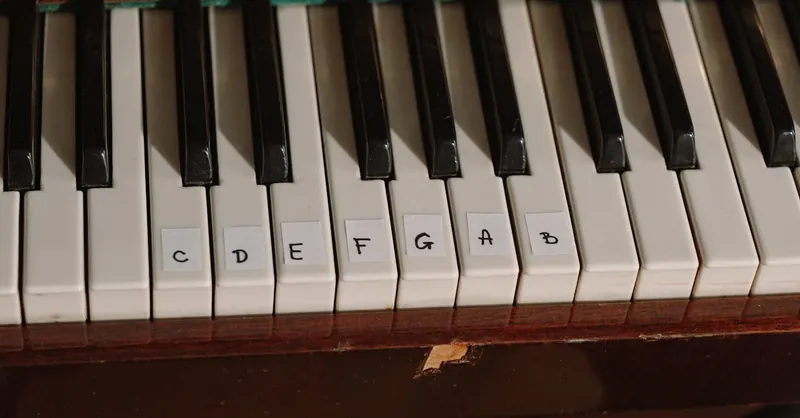
Image courtesy of cottonbro studio
Familiarizing with Scales: Major, Minor, and Pentatonic
In piano improvisation, scales are your essential building blocks—they provide the palette of notes you’ll use to craft melodies that sound coherent and expressive. As a beginner, the three most important scales to focus on are the major scale, minor scale, and pentatonic scale. Each offers a distinct mood and character, and practicing them regularly will vastly improve your ability to improvise confidently.
The Major Scale: Bright and Versatile
The major scale is the foundation of Western music and is known for its happy, uplifting sound. It consists of seven notes arranged in a specific pattern of whole and half steps:
- Whole, Whole, Half, Whole, Whole, Whole, Half
For example, the C major scale uses only the white keys: C, D, E, F, G, A, B, C. Practicing the major scale by playing it ascending and descending helps you internalize this pattern, which is crucial when improvising over major chord progressions.
The Minor Scale: Emotional Depth
The natural minor scale introduces a more melancholic or introspective tone. Its pattern differs from the major scale, creating a mood that is richer in emotional expression:
- Whole, Half, Whole, Whole, Half, Whole, Whole
The A minor scale (A, B, C, D, E, F, G, A) uses all white keys as well but starts on A, giving it a different sound. Beginners should practice the minor scale to bring diversity and feeling into their improvisations, especially when playing in minor keys or jazz-influenced styles.
The Pentatonic Scale: Simple and Foolproof
The pentatonic scale is perhaps the most beginner-friendly and widely used scale for improvisation. It uses only five notes, removing some of the more tension-filled tones found in major and minor scales, which makes it easier to create pleasing melodies without worrying about "wrong" notes.
- The major pentatonic scale follows the formula: 1, 2, 3, 5, 6 (e.g., C, D, E, G, A in C major)
- The minor pentatonic scale uses: 1, b3, 4, 5, b7 (e.g., A, C, D, E, G in A minor)
Pentatonic scales are incredibly popular in blues, rock, and pop music, making them a go-to for beginners wanting quick, effective improvisation skills.
How to Practice Scales for Improvisation
- Start Slowly: Play each scale hands separately, focusing on finger placement and smooth transitions between notes.
- Use a Metronome: Maintain a steady rhythm to build muscle memory and timing precision.
- Experiment with Patterns: Instead of playing scales straight up and down, try playing intervals (like thirds or fourths), skips, or rhythmic variations.
- Improvise with Scale Notes: Once comfortable, create short melodies using only notes from the scale to train your ear and finger coordination.
- Apply Over Chords: Practice these scales over relevant chord progressions to understand how melodies fit harmonically.
By mastering these major, minor, and pentatonic scales, you equip yourself with versatile tools to approach almost any improvisation situation. Regular, mindful practice of these scales forms the backbone of developing a fluent, confident improvisational style on piano.
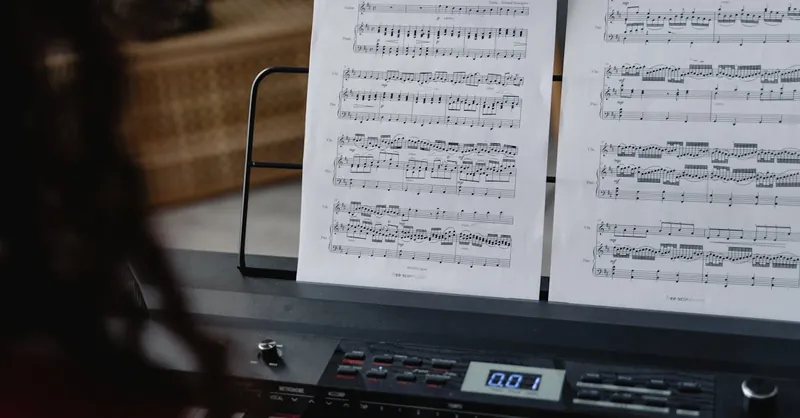
Image courtesy of Tima Miroshnichenko
Building Chord Progressions for Improvisation
To create engaging piano improvisations, understanding how to build and use basic chord progressions is essential. Chord progressions are sequences of chords that provide the harmonic foundation for your soloing, guiding the flow and emotional direction of your music. By learning a few simple progressions, you’ll develop a framework that helps your improvised melodies sound purposeful and connected rather than random.
Common Beginner Chord Progressions to Know
Here are some fundamental chord progressions every novice pianist should master for improvisation:
- I–IV–V progression: One of the most popular progressions in Western music, especially in blues, pop, and rock.
- In C major: C (I) – F (IV) – G (V)
- ii–V–I progression: A staple in jazz and many contemporary styles, creating smooth harmonic movement.
- In C major: Dm (ii) – G (V) – C (I)
- I–vi–IV–V progression: Common in pop and ballads, offering a balanced emotional mix.
- In C major: C (I) – Am (vi) – F (IV) – G (V)
Using Chord Progressions as Your Soloing Foundation
Once you’re comfortable playing these chord sequences with your left hand, you can start improvising melodies on your right hand. Here’s how chord progressions guide your improvisation:
- Match scale tones to the chords: Each chord in the progression suggests certain scale notes. For example, over a C major chord, emphasize notes from the C major scale, especially chord tones like C, E, and G.
- Target chord tones: Landing on chord tones during your improvisation makes your melodies sound harmonically strong and “in the moment.”
- Use passing and neighboring tones for interest: While sticking mostly to scale and chord tones, adding a few non-chord tones creates tension and release, vital for expressive playing.
- Change melodic focus with each chord: As the chords change in the progression, shift the emphasis of your improvisation accordingly to reflect the new harmonic context.
Quick Practice Tips for Progression-Based Improvisation
- Play the progression repeatedly: Loop the chord sequence with your left hand to internalize its harmonic rhythm.
- Experiment with simple melodies: Improvise short, singable phrases on your right hand that fit over each chord.
- Record and listen back: This helps identify strong melodic ideas and areas that need refinement.
- Combine scales and chords: Use your knowledge of scales (major, minor, pentatonic) to choose appropriate notes over each chord, enhancing coherence in your solos.
By building your improvisation around basic chord progressions, you create a solid harmonic roadmap, turning spontaneous play into confident musical storytelling. This approach bridges the gap between theory and expression, enabling even beginners to craft solos that are both structured and creative.

Image courtesy of David McEachan
Techniques to Develop Your Ear and Rhythm
Developing a strong musical ear and solid rhythmic skills is fundamental for effective piano improvisation. Ear training sharpens your ability to recognize intervals, chords, and melodic patterns by sound, enabling you to respond intuitively while improvising instead of relying solely on visual cues from the keyboard. Similarly, rhythm practice ensures your spontaneous melodies have flow and groove, making your improvisation feel natural and engaging.
Ear Training Exercises for Beginners
Begin by training your ears to identify basic musical elements. Here are some simple, effective exercises to incorporate into your practice routine:
- Interval Recognition: Listen to and sing or play intervals like major and minor seconds, thirds, and perfect fifths. This helps internalize sound relationships crucial for melody construction.
- Chord Quality Identification: Practice distinguishing between major, minor, and seventh chords by ear. Use apps or online tools that play chords for you to identify and reproduce.
- Call and Response: Record a short melodic phrase and try to imitate it by ear on your piano. This trains your ability to listen carefully and reproduce melodies spontaneously.
- Singing Solfege: Use solfege syllables (Do, Re, Mi, etc.) to sing scales and simple melodies, connecting your hearing with pitch production.
Consistent ear training leads to better musical intuition, allowing you to anticipate chord changes and create more cohesive improvised lines.
Rhythm Practice to Enhance Improvisational Flow
Rhythm is often overlooked but is vital for making your improvisation compelling and expressive. Here are practical rhythm exercises:
- Use a Metronome: Practice improvising while locking your phrases to a steady beat to develop timing and groove.
- Experiment with Note Durations: Vary the length of your notes—mix quarter notes, syncopated eighth notes, and rests—to create dynamic rhythmic interest.
- Clap or Tap Rhythms: Before playing, clap out complex rhythms to internalize pulse and subdivision.
- Play Along with Backing Tracks: Jamming with simple rhythmic accompaniments gives real-world context to your timing and phrasing.
By integrating ear training and rhythm exercises into your daily practice, you build a responsive, flexible approach to improvisation. This foundation helps turn theoretical knowledge into fluent, expressive piano playing, transforming your improvisations into captivating musical conversations.
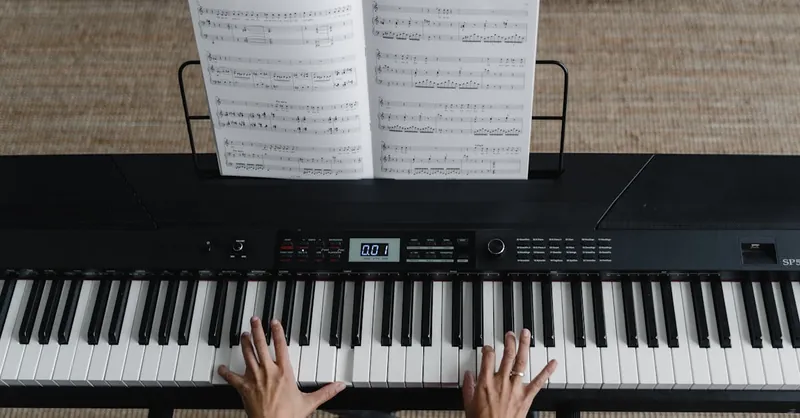
Image courtesy of Tima Miroshnichenko
Simple Exercises to Start Improvising on Piano
Getting started with piano improvisation can feel overwhelming, but breaking it down into simple, practical exercises helps build your confidence and creativity step-by-step. These drills are designed to apply the music theory concepts you've learned so far and encourage experimentation in a structured way.
1. Improvise Using a Single Scale
Choose one scale to focus on—C major or A minor are great for beginners. Play the scale slowly with your left hand to establish the tonal center, then use your right hand to:
- Play short, repeating melodic phrases using only notes from the scale.
- Experiment with moving the melody up and down the scale, emphasizing different scale degrees.
- Vary the rhythm and note durations to make your phrases more interesting.
This exercise helps you internalize the sound of the scale, making it easier to spontaneously create melodies.
2. Call and Response Pattern
This classic improvisation technique involves creating a melodic phrase (call) and then playing a response phrase that complements or contrasts with it. Try the following steps:
- Play a simple 2- or 3-note phrase on your right hand.
- Pause briefly, then answer with a different phrase that either repeats the rhythm or plays contrasting notes.
- Repeat this back-and-forth several times, varying dynamics and articulation.
The call and response exercise promotes active listening and creativity, essential skills for improvisers.
3. Improvise Over a Basic Chord Progression
Using the chord progressions you’ve practiced (such as I–IV–V in C major), loop the chords with your left hand. Then, with your right hand:
- Play notes from the corresponding scale of each chord.
- Focus on landing on chord tones (notes that belong to the current chord) to anchor your improvisation harmonically.
- Use passing tones and neighboring notes from the scale to create smooth melodic movement between chord tones.
This drill connects your understanding of harmony with melody creation, transforming theoretical knowledge into accessible musical ideas.
4. Experiment with the Pentatonic Scale
The pentatonic scale is a beginner-friendly tool that avoids dissonance, making improvisation less intimidating. Try:
- Playing open-ended melodic phrases using only pentatonic notes.
- Combining different rhythmic patterns to add groove.
- Mixing ascending and descending note sequences for variety.
Since pentatonic scales fit well over many chord changes, they are excellent for developing instinctive improvisation skills.
5. Rhythmic Variation Exercise
Good improvisation isn’t just about what notes you play, but when and how you play them. Practice:
- Playing a simple melody but changing the rhythm by adding syncopation or rests.
- Clapping or tapping tricky rhythms before trying them on the keyboard.
- Using a metronome or drum loop to maintain a steady groove while you experiment.
Developing rhythmic flexibility makes your improvisations feel dynamic and engaging rather than mechanical.
By incorporating these simple improvisation exercises into your practice routine, you’ll quickly gain the tools to create spontaneous, expressive piano music. Remember, the goal is to explore freely within a framework—using scales, chords, and rhythm to guide your creativity—so you can develop your unique musical voice with confidence.

Image courtesy of Yan Krukau
Using Repetition and Motifs Creatively in Piano Improvisation
One of the most effective and accessible ways to make your piano improvisations more engaging is by harnessing the power of repetition and motifs. A motif is a short, memorable musical idea—a small melodic or rhythmic pattern—that you can repeat and develop throughout your improvisation. By creatively repeating and varying these motifs, you create a sense of unity and direction in your playing, making your solos sound intentional rather than random collections of notes.
Why Use Repetition and Motifs?
- Creates Cohesion: Repeating a motif helps listeners recognize a theme, bringing coherence to your improvisation.
- Builds Anticipation: Variations of a repeated motif can surprise the ear, keeping the listener interested while maintaining familiarity.
- Simplifies Ideas: Focusing on a small melodic fragment allows you to explore creativity deeply without feeling overwhelmed.
- Enhances Emotional Impact: Repetition can emphasize emotional expression, making your improvisation feel more powerful and personal.
Tips for Using Motifs Effectively
- Start Small: Pick a short sequence of 2 to 4 notes that captures a mood or mood you want to express.
- Repeat Exactly: Play the motif several times initially to establish it clearly.
- Vary Rhythm: Change the note durations or add syncopation to keep the motif fresh without altering the pitches.
- Alter Intervals: Shift some notes by a step up or down to create melodic variation while preserving the motif’s identity.
- Use Different Octaves: Play the motif in higher or lower octaves to add texture and dynamic contrast.
- Combine Motifs: Introduce a second motif and alternate or overlap it with the first to build complexity.
By mastering the art of repetition and motif development, beginner pianists can create improvised pieces that feel structured and expressive. This technique bridges the gap between simple melody-making and storytelling on the piano, making your improvisation sessions more enjoyable and rewarding.

Image courtesy of Pixabay
Incorporating Dynamics and Expression in Piano Improvisation
One of the most powerful ways to make your piano improvisation truly captivating is by adding dynamics and expressive articulation. Dynamics refer to the variations in volume—from soft (piano) to loud (forte)—while articulation describes how notes are played, such as smoothly connected (legato) or sharply detached (staccato). Mastering these elements brings your improvised music to life, transforming simple melodies into emotionally rich performances that communicate your unique musical voice.
When you incorporate dynamics, you create contrast and shape within your improvisation, guiding the listener through peaks of intensity and moments of calm. For example, starting a phrase softly and gradually increasing volume (crescendo) can build excitement, while a sudden drop in volume (decrescendo) adds intrigue or introspection. Similarly, varying your articulation adds texture and character to your playing — using staccato notes for a playful, rhythmic feel, or legato for smooth, flowing lines. These nuances help emphasize melodic ideas and make improvisation feel more human and spontaneous.
Tips to Practice Dynamics and Expression
- Experiment with Volume: Deliberately play the same melodic phrase at different dynamic levels to develop control over your touch and sound.
- Use Contrast: Alternate between loud and soft passages within your improvisation to maintain listener interest.
- Practice Articulations: Try playing short motifs using legato, staccato, and accented notes to understand how articulation affects mood.
- Combine with Phrasing: Think of your improv as a conversation by shaping phrases with rises and falls in dynamics and articulation.
- Listen and Imitate: Listen to recordings of expressive pianists and try to replicate their dynamic shifts and phrasing patterns.
By focusing on dynamics and expressive playing, beginner pianists move beyond just playing the right notes to delivering music that feels alive and emotionally engaging. This essential layer of improvisation not only enriches your performances but also deepens your connection with your instrument and audience.

Image courtesy of Craig Adderley
Common Mistakes Beginners Make and How to Avoid Them
As you begin your journey into piano improvisation, it’s normal to encounter some common pitfalls that can slow your progress or cause frustration. Recognizing these mistakes early—and learning strategies to overcome them—will help you build confidence and develop a natural, creative flow in your playing.
Overthinking Instead of Playing
One of the biggest barriers for beginners is overthinking during improvisation. Trying to calculate every note or obsess over theory can interrupt your musical intuition, making your playing feel stiff or mechanical. To avoid this:
- Focus on simple scales and motifs: Instead of juggling complex theory, rely on familiar scales like the pentatonic or major scale to guide your choices.
- Embrace imperfection: Remember, improvisation is about expression, not perfection. Allow yourself to play “wrong” notes as part of the learning process.
- Practice breathing and relaxation: Keeping your mind calm reduces mental clutter and helps ideas flow naturally.
Fear of Making Mistakes
Many beginners hold back because they fear hitting the wrong notes or sounding unmusical. This fear stifles creativity and inhibits experimentation. Overcome it by:
- Creating a safe practice environment: Improvise when alone or with supportive listeners who encourage exploration.
- Using pentatonic scales: These scales minimize dissonant notes, lowering the chance of mistakes and boosting confidence.
- Applying the “call and response” technique: This structures your playing with short phrases, giving you clear starting points and checkpoints during improvisation.
Neglecting Rhythm and Timing
Focusing only on which notes to play without attention to rhythm can make your improvisation feel flat or disjointed. To avoid this common error:
- Use a metronome or backing track to maintain consistent timing.
- Experiment with syncopation, rests, and varied note lengths to add interest and groove.
- Practice clapping and counting rhythms separate from the piano to internalize pulses.
Ignoring the Harmonic Context
Improvising melodies without considering the underlying chord progression can lead to disconnected or jarring soundscapes. To develop musical coherence:
- Always keep the current chord tones in mind and emphasize them during your improvisation.
- Adapt melodic choices to the progression by shifting scales or motifs as chords change.
- Start by improvising over simple progressions like I–IV–V before moving to more complex sequences.
By being aware of these common beginner mistakes and actively applying strategies to move past them, you’ll cultivate a more confident, expressive, and enjoyable improvisation practice. Remember, developing your unique piano voice takes time and patience—embrace the learning curve with curiosity and persistence.
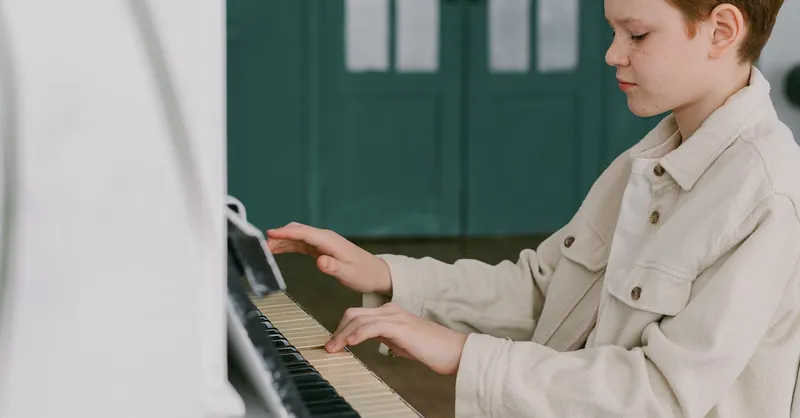
Image courtesy of Mikhail Nilov
Next Steps: How to Practice and Progress in Piano Improvisation
Taking your piano improvisation from beginner exercises to confident, expressive playing requires a structured practice plan combined with the right resources that foster continuous growth. To progress effectively, consistency and focused goals are key. Here’s a practical roadmap to guide your daily practice and ongoing development:
Structured Practice Plan for Improvement
-
Warm-Up with Scales and Chord Progressions
Begin each session by playing your major, minor, and pentatonic scales hands separately and together, slowly increasing speed. Follow this by running through common chord progressions (like I–IV–V and ii–V–I) in different keys to internalize harmony. -
Focused Ear and Rhythm Training
Dedicate 5–10 minutes to ear training exercises such as interval recognition and simple rhythmic clapping. Using apps or online tools can accelerate your aural skills, which are essential for intuitive improvisation. -
Motif and Phrase Development
Spend time improvising with small motifs, practicing repetition and variation to develop coherent musical ideas. Explore dynamics and articulation within these phrases to add emotional depth. -
Improvise Over Backing Tracks or Looped Progressions
Use backing tracks or looped chord sequences to simulate real playing situations. This builds confidence applying theory in a musical context and helps develop your timing, phrasing, and expressiveness. -
Record and Review Your Playing
Recording your improvisations and critically listening back is invaluable for identifying strengths and areas to improve. Focus on melody, rhythm, and harmonic choices, and adjust your practice accordingly.
Recommended Resources for Ongoing Learning
- Ear Training Apps: Tools like Teoria, Functional Ear Trainer, or EarMaster help sharpen interval and chord recognition.
- Backing Tracks: Websites such as YouTube or iReal Pro offer customizable tracks in various genres and keys ideal for improvisation practice.
- Online Tutorials and Courses: Platforms like Coursera, Udemy, or dedicated piano channels often provide structured lessons focusing on improvisation techniques.
- Practice Journals: Keep a daily log of what you practiced and your progress to stay accountable and motivated over time.
By following a regular, goal-oriented practice routine and making use of targeted resources, you’ll steadily expand your improvisational vocabulary and musical confidence. Remember, piano improvisation is a journey—embrace each step with patience and curiosity, and your ability to create spontaneous, expressive music will flourish naturally.
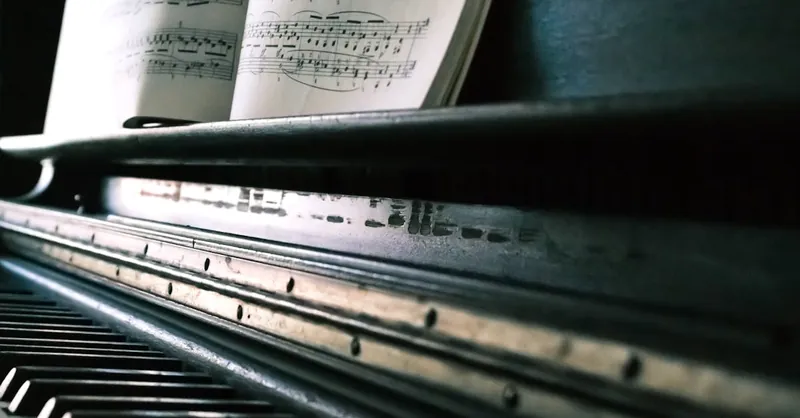
Image courtesy of Steve Johnson
